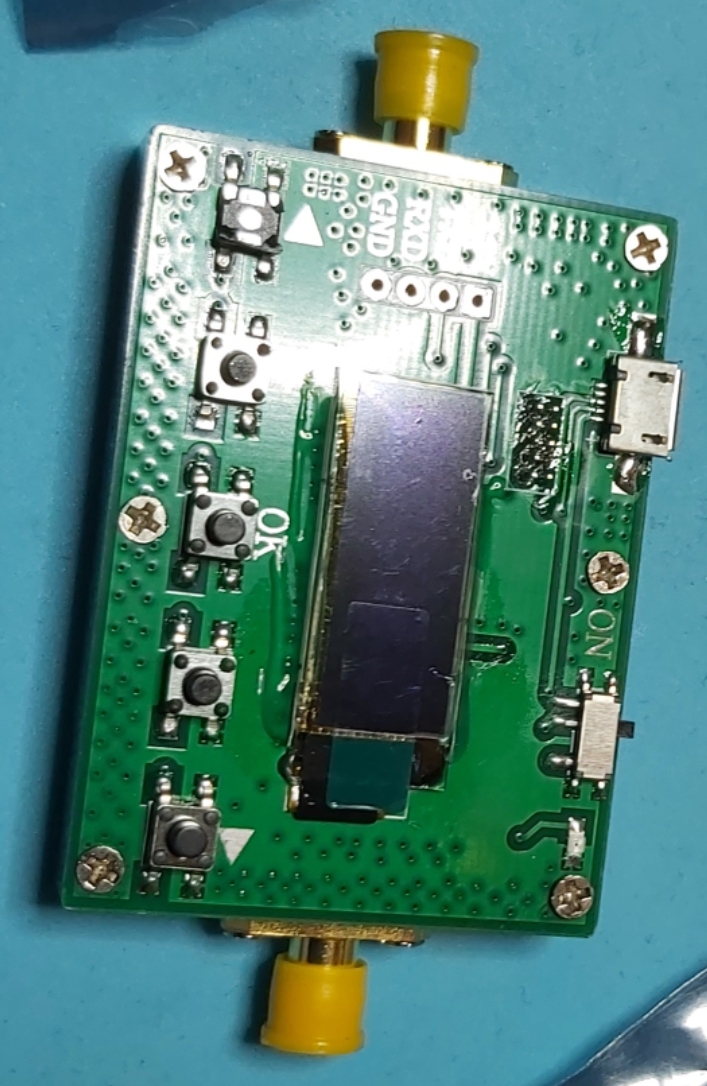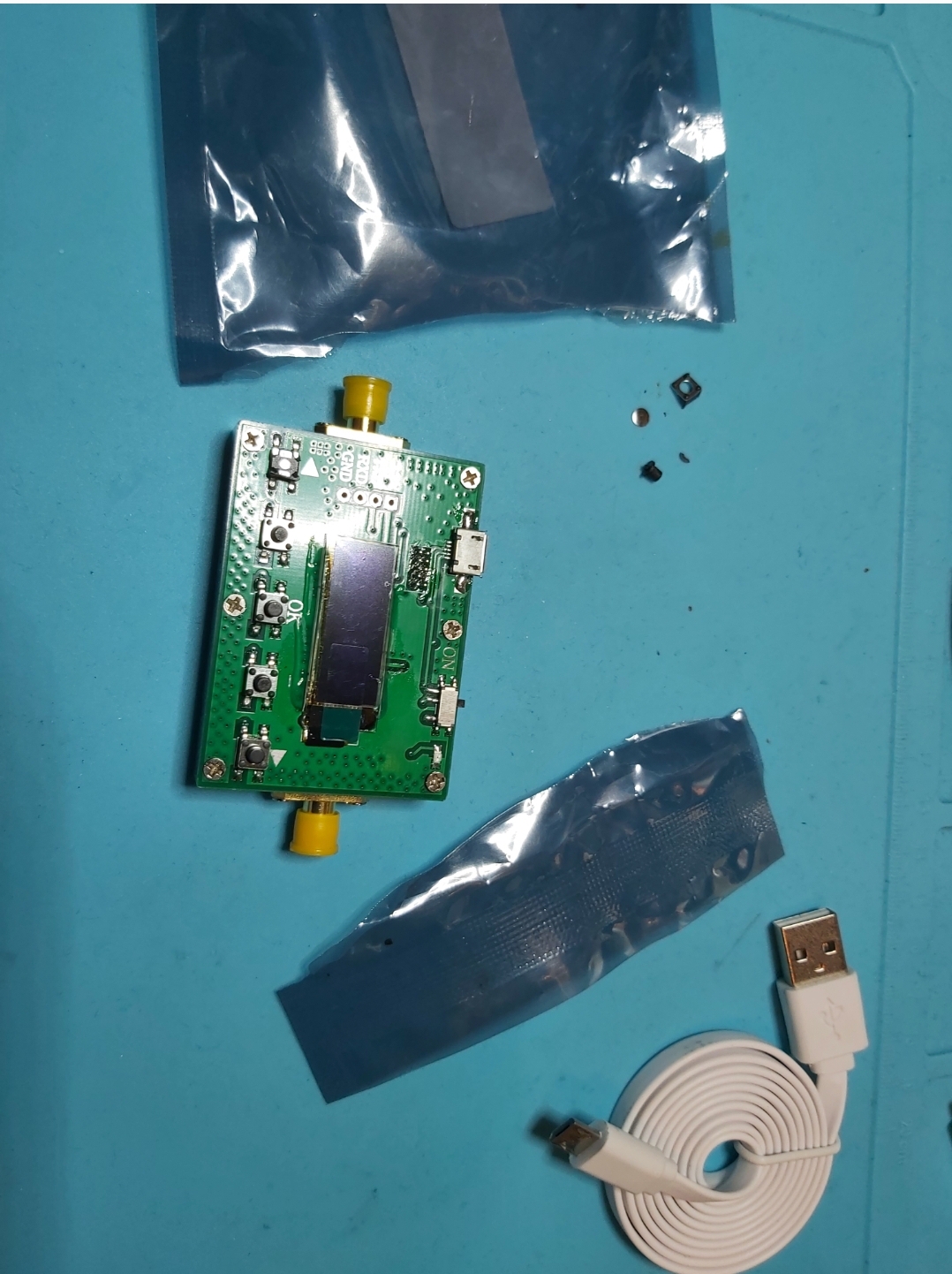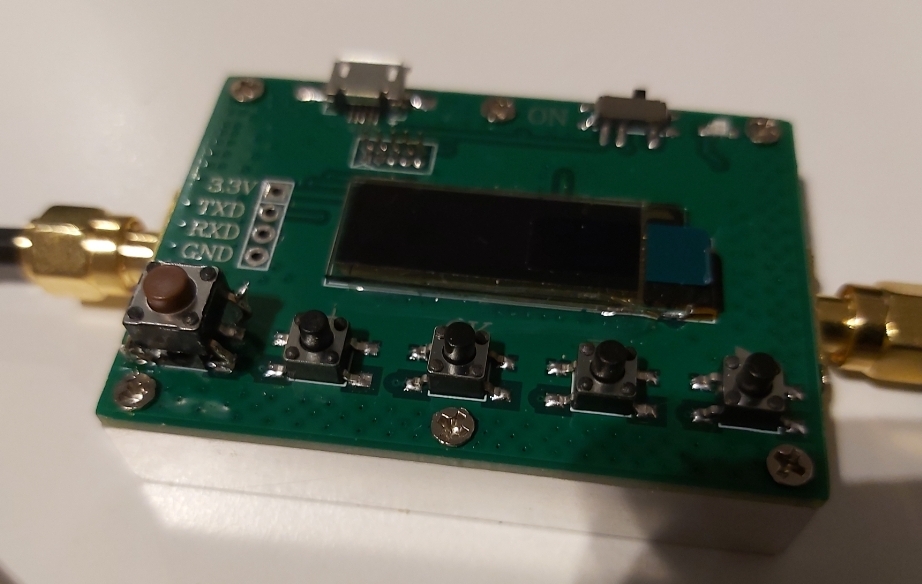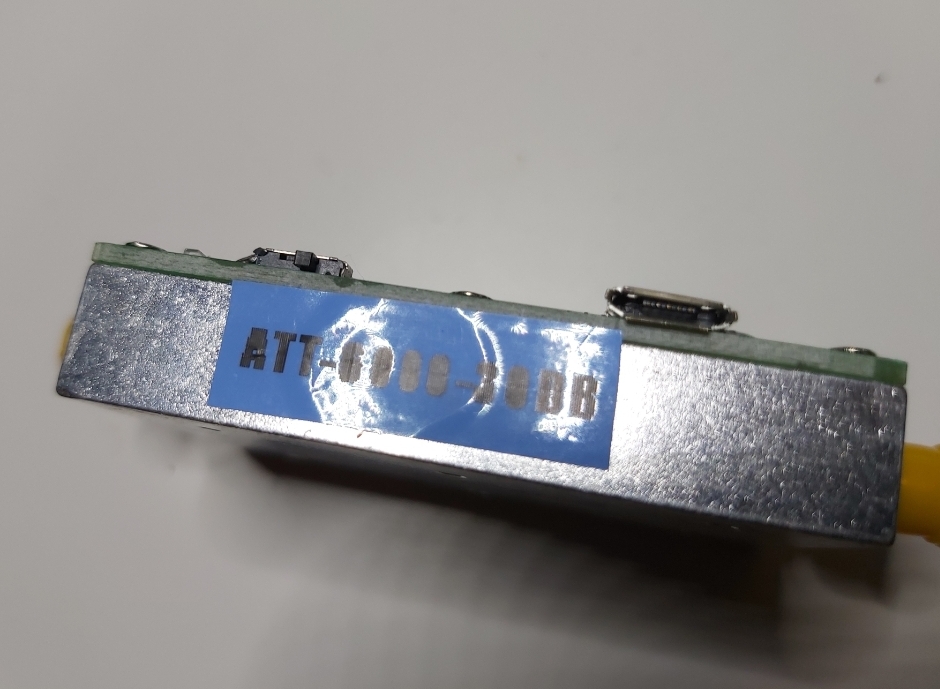RF attenuators are essentially electrical resistor circuits that are put in line with an RF signal and reduce the signal strength. The amount of resistances used is what determines the amount of attenuation. Basic circuits used in attenuators are pi pads (π-type) and T pads. The lost power in the attenuator is converted into heat.
A variable attenuator is a circuit that decreases the strength of the input signal either continuously or step by step without appreciable signal distortion while substantially maintaining constant impedance match.
Mechanically variable attenuators are usually adjusted with a tuning screw or control knob. Electronically controlled variable attenuators are available in many forms. Nowadays there are integrated chips that implement adjustable RF attenuator. One commonly seen such IC has been PE4302 (end of life product that is replaced with PE4312). The PE4302 is a high linearity, 6-bit RF Digital Step Attenuator (DSA) covering a 31.5 dB attenuation range in 0.5 dB steps, and I bought a circuit board with PE4302 chip in with plans to build my own adjustable RF attenuator. There are also other boards available with similar functionality based on PE43703 and HMC472 chips.
I planned to add my own controls to the board to make is easy to use. Due lack of time I never finished that project. While I still had need for adjustable RF attenuator, saw 6G Digital Programmable Attenuator 30DB Step 0.25DB OLED Display CNC Shell RF Module for sale at attractive price (below 30 Euros). This looked like time saver compared to building my own controls.
6G Digital Programmable Attenuator 30DB Step 0.25DB OLED Display CNC Shell RF Module is a digital attenuator can adjust the RF signal level of the circuit in 0.25dB steps without interrupting the circuit. The manufacturer advertises OLED display for attenuation, high accuracy, stability and reliability and even option to control the module from computer. This looked like a high quality attenuator built in a solid aluminum case at attractive price point.
Technical data from product page:
1. Working frequency: LF-6GHz
2. Attenuation adjustment range: 0-31.75dB
3. Attenuation step: 0.25 (dB)
4. Insertion loss: ≤1.5dB (the insertion loss at the high frequency end will be a little larger)
5. Standing wave ratio: ≤1.4
6. Attenuation accuracy: ± 0.25dB Max
7. Rated power: ≤1W
8. Connector form: SMA (female, outer screw inner hole)
9. Temperature range: -10 ℃ ~ + 50 ℃ (operation), -40 ℃ ~ + 70 ℃ (not operation)
10. Dimensions: 55X40X16.5mm (excluding SMA interface protruding part, SMA protruding part 9mm)
11. Weight: 57g
12. Input and output impedance: 50 ohms
After few weeks of waiting, I finally received the package. I was happy that the packet finally came, but what I was very disappointed that what I received was broken. One of the control buttons needed to operate it was completely broken, quite probably during postal handling because it was not packaged well (just put to a plastic bag without any package or padding).
I contacted Banggood customer service on the problem. They promised to send me a new one, and they did not want me to send the broken one back. Because there was still weeks waiting, I tried if I could fix the one I have on the mean time when waiting for it. Trying to glue the existing button was out of luck. Best would be just change the button to a new one. Unfortunately I did not have any exactly right size button, so I had to make a “hack” of soldering a bigger button in place. After the soldering the unit worked well.
After waiting I received the new one. This time it was still packaged in the same bad way, but fortunately the buttons or display did not get damaged on the transit. Looked good. But when I tried to power the device with USB cable, I could not plug in the supplied USB cable because the microUSB connector on the module has taken some hit becoming too flat.
I fixed this connector myself and got the unit working.
This product fells like a high quality attenuator built in a solid aluminum case, but there seems to be some problems in getting the unit in good condition from factory to the customers.
When I got the module to work, I found it worked well (tested the attenuation working well with NanoVNA). The module was easy to use. The attenuation was displayed on OLED screen and can be controlled with control buttons. The device remembers the set attenuation over device power down and power up cycles. This module needs 5V to operate, and this 5V is designed to be supplied through the microUSB connector.
There product page also gave download link for a PC control software. I did not try to run it, because after download the PC virus scanner listed the software package suspicious. There is also said to be option to control the attenuation of the device through Python code rather than an application. There is some Python example code at https://github.com/emptemp/att6000_control




1 Comment
Tomi Engdahl says:
https://www.mwrf.com/technologies/components/article/21250929/analog-devices-rf-demystified-what-is-an-rf-attenuator